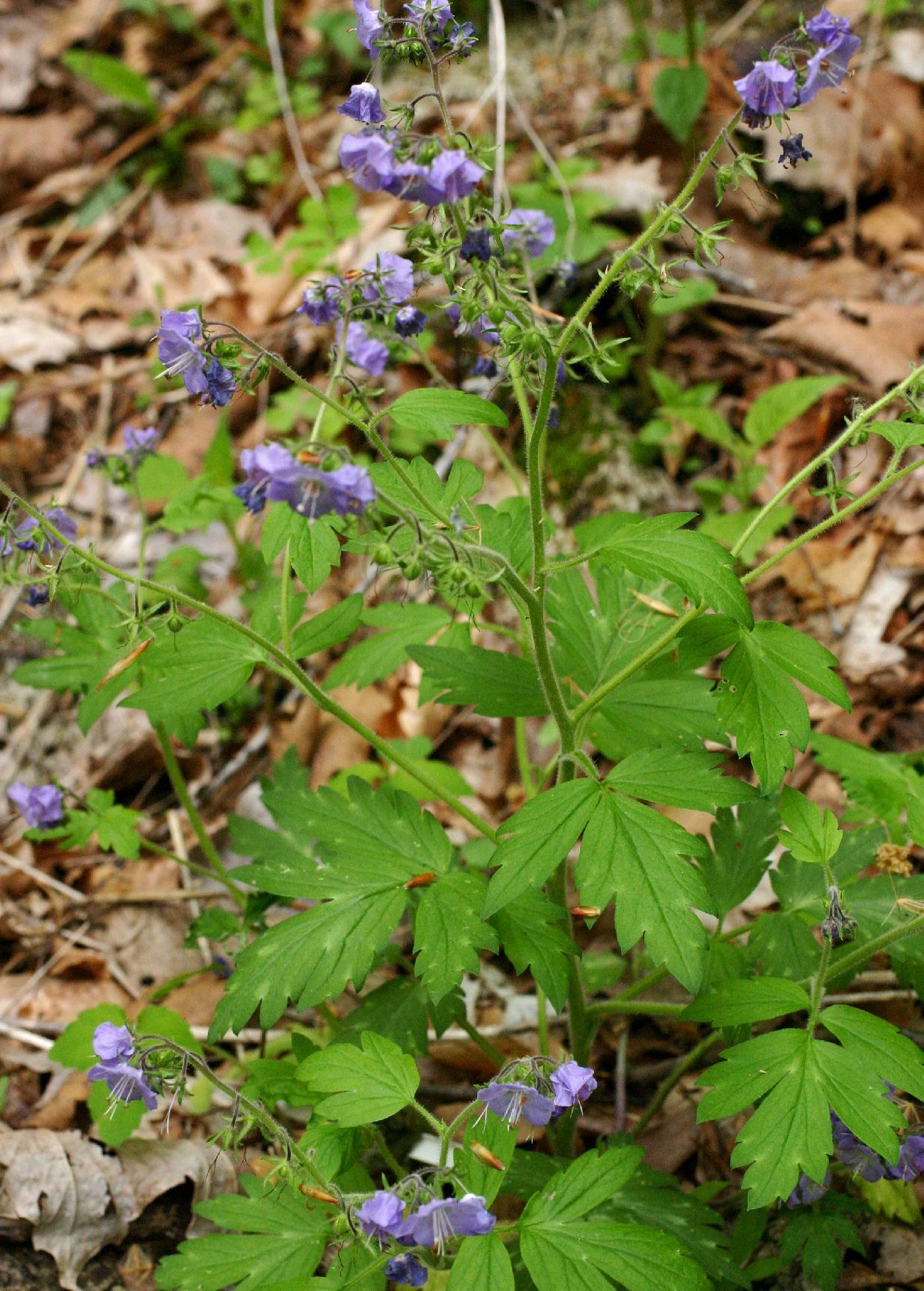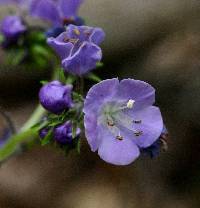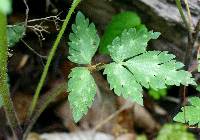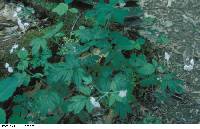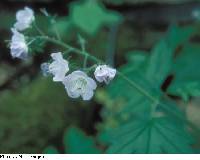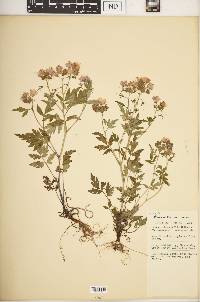Biennial herb 20 - 50 cm tall
Stem: upright, covered with stiff, spreading hairs, and becoming glandular-hairy in the inflorescence.
Leaves: long-stalked, broadly triangular or egg-shaped in outline, but pinnately, three- to five-parted into egg-shaped segments, which are further sharply-lobed or coarsely toothed.
Inflorescence: a glandular-hairy, somewhat elongate, few-branched cluster near the top of the stem, with the flowers on stalks about the same length as the sepals.
Flowers: blue, 1 - 1.5 cm wide, radially symmetric, cup- or bell-shaped with broad, somewhat spreading petals.
Sepals: five, but fused at very base, then separating into fairly narrow, lance-shaped, pointed, hairy lobes.
Petals: five, but fused at base, then separating into broad, round-tipped, somewhat spreading lobes, which are very hairy on the back. Five, linear, 2 - 2.5 mm long appendages sit inside the base of the petal tube opposite each petal lobe.
Stamens: five, filaments very long-hairy, attached near the base of the petal tube (between the linear appendages), alternating with the petal lobes, and obviously extending beyond the petals.
Pistil: with a single-chambered, superior ovary; and one style, which splits into two stigmas.
Fruit: a stalked (stalks spread or curve downward), two-valved, single-chambered capsule with four, 3 - 4 mm long, black seeds.
Root: a taproot.
Similar species: No other species of Phacelia have been reported from the Chicago Region, but P. bipinnatifida is easily separated from the other eastern North American species in the genus because it has stalked leaves, non-toothed petals, and very hairy filaments. Our native Hydrophyllum species may appear somewhat similar, but they can be distinguished from P. bipinnatifida because the flowers have more narrow petals, and the inflorescences are more compact, branching clusters, which arise on stalks from the leaf axils.
Flowering: April to June
Habitat and ecology: Only reported in the Chicago Region from a single specimen that was descendant from an introduced population, this species naturally occurs more south of our area in rich woods or shaded, wetter areas.
Occurence in the Chicago region: non-native
Author: The Field Museum

